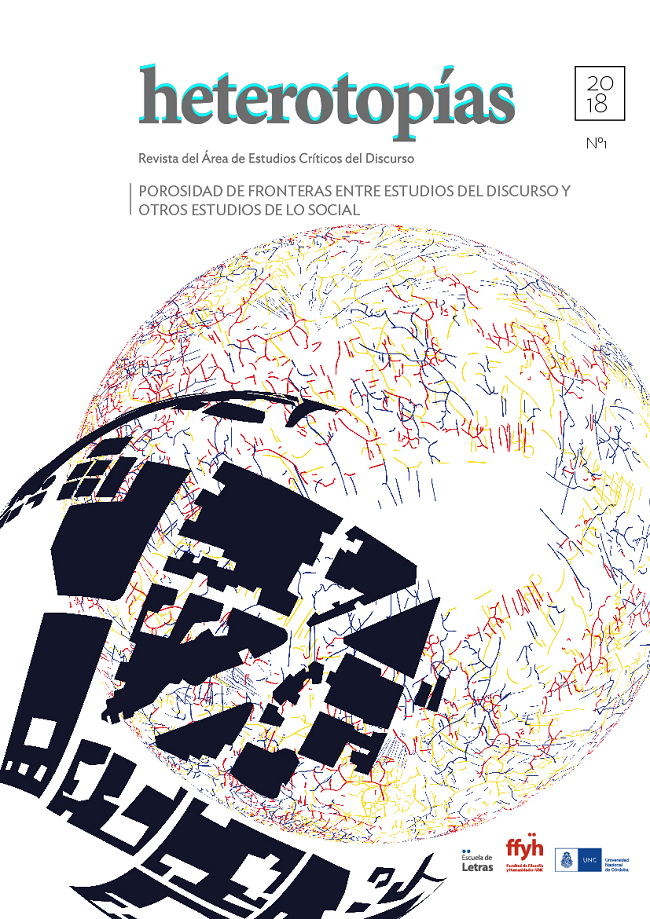Folklore digital: la vigencia de las leyendas urbanas en los creepypastas
Main Article Content
Abstract
The aim of this research is to relieve the genre variances and invariances of the creepypasta to establish the distinctive traits of this genre in Argentina. Our theoretical framework is taken from Discourse Analysis and recent works about mediation and platforms by Oscar Traversa (2009), studies about the culture of connectivity by José Van Dijck (2016) and works about Urban legends by Jan Harold Brunvand (2011). We believe that this popular literature in digital form generates spaces of collective and collaborative writing where short versions or adaptations of urban legends are shared with the purpose of generating fear in the readers. In Argentina the creepypasta presents a stylistic challenge: to be creative in the production of regional variants of several classical stories. This research, thus, serves as a contribution for the studies of digital folklore in our country. But moreover, we believe that teachers can enrich themselves with this knowledge because the students who were or are still administrators, readers or producers of creepypasta, participate in a “group or group network that generates particular forms of production, interpretation and circulation of discourse” (Maingueneau, 2004. our translation). The users of this and other platforms, acquire ?due to frequency? the genre features and restrictions that correspond to these texts. Using the abilities and previous knowledge of the students may be productive to overcome some of the difficulties that students face in their own written productions, not to mention the competences they acquire in the use and manipulation of illustrations, images, videos and audios.
Downloads
Article Details
Those authors who have publications with this journal, accept the following terms: Those authors who have publications with this journal, accept the following terms:
a. The authors will keep their copyright and guarantee to the journal the right of first publication of their work, which will be simultaneously subject to the Creative Commons Attribution - Non-Commercial - Share Alike (by-nc-sa) Attribution License; no commercial use of the original work or any derivative works is allowed, the distribution of which must be done with a license equal to the one that regulates the original work.
b. Authors may adopt other non-exclusive license agreements for the distribution of the published version of the work (e.g., deposit it in an institutional telematic archive or publish it in a monographic volume) provided that the initial publication in this journal is indicated.
c. Authors are allowed and recommended to disseminate their work through the Internet (e.g. in institutional telematic archives or on their website) before and during the submission process, which may lead to interesting exchanges and increase the number of citations of the published work. (See The effect of open access).
References
BEACCO, Jean Claude. (2004). “Trois perspectives linguistiques sur la notion de genre discursif”, Langage, 153, 109-119.
BRUNVAND, Jan Harold. (2011). El fabuloso libro de las leyendas urbanas. Demasiado bueno para ser cierto. Barcelona: Alba.
FERNÁNDEZ, José Luis. (2016). “Plataformas mediáticas y niveles de análisis”. InMediaciones de la Comunicación, 11, 71-96.
GENETTE, Gérard. (1989). Palimpsestos. La literatura en segundo grado. Madrid: Taurus. MAINGUENEAU, Dominique. (2004). “¿Situación de enunciación o situación de comunicación?”, Revista Discurso.org, 5. Recuperado de: http://www.revista.discurso.org/articulos/ Num5_Art_Maingueneau.htm.
MAINGUENEAU, Dominique. (2009). Análisis de textos de comunicación. Buenos Aires: Nueva Visión.
STEIMBERG, Oscar. (1998). Semiótica de los medios masivos. Buenos Aires: Atuel.
TRAVERSA, Oscar. (2009). “Dispositivo-enunciación: en torno a sus modos de articularse”. En: Figuraciones, 6. Estéticas de la vida cotidiana. Buenos Aires, IUNA. Crítica de Artes. Recuperado de: http://www.revistafiguraciones.com.ar/numeroactual/recorrido.php?idn=6&idr=48#texto.
VERÓN, Eliseo. (2005). “Cuando leer es hacer: la enunciación en el discurso de la prensa gráfica”, en Fragmentos de un tejido. Barcelona: Gedisa. pp. 171-191.
VAN DIJCK, José. (2016). La cultura de la conectividad. Una historia crítica de las redes sociales. Buenos Aires: Siglo XXI.
